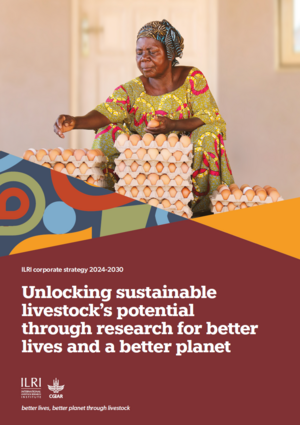
Quantitative risk assessment of salmonellosis through pork consumption in Vietnam
Abstract
Food safety is an important public health concern worldwide, especially in emerging
economies, including Vietnam, where pork production plays an important role in both
livelihood and diet. Throughout studies conducted in this PhD thesis, the overall goals of this
research was to assess the extent of Salmonella contamination along the smallholder pork
value chain in Vietnam and determine the risk of salmonellosis in humans to aid in the
production of the risk reduction strategies. We have used both participatory and field
epidemiological approaches to explore food safety perceptions and practices among a variety
of different occupational streams involved in the smallholder value chain and pork consumers,
and to identify Salmonella prevalence and potential risk factors along the chain. A consumer
survey and laboratory experiments were also conducted to determine pork handling practices
and cross-contamination risks of Salmonella in pork in Vietnamese households. We have
developed a quantitative microbial risk assessment (QMRA) model to quantify salmonellosis
risks in the household through pork consumption.
The first study findings relating to food safety practices and perceptions held by pork
value chain associated employees and consumers indicated that most slaughterhouse workers
acquired knowledge and experience of food safety through ‘‘learning by doing’’ rather than
from training. The workers and sellers often use the same cloths to dry the meat and clean
equipment without thinking of contamination risks. They were found to possess some
accurate perceptions about swine and foodborne diseases but had misperceptions of zoonoses
risks. Consumers perceived that pork freshness was a strong indicator of food safety and
perceived that sellers may have health issues that they are trying to conceal by wearing protective equipment (e.g., gloves, masks). Veterinary and public health staff emphasized the
gap between regulations and food safety practices.
The investigation results on Salmonella contamination and risk factors demonstrated
Salmonella prevalence to be 36.1% (26/72), 38.9% (58/149), and 44.7% (97/217) on pig pen
floors, pig carcasses in slaughterhouses and cut pork in pork shops, respectively. The risk
factors for Salmonella prevalence on pig pen floors included having a pig pen next to the
household (p = 0.055) and free access to the farm by visitors (p = 0.061). Slaughter areas
close to lairage without hygienic measures was a risk factor for carcass contamination at the
slaughterhouse (p = 0.031). For pork shops, presence of flies or insects on the pork at shop (p
= 0.021) and use of cloths at pork shop (p = 0.023) were risk factors. The Salmonella
prevalence on pig carcasses and cut pork was significantly lower in winter compared to other
seasons.
A household survey revealed that most people (71%) used the same knife and cutting
board for both raw and cooked pork. Simulation experiments indicated that hands, washwater,
knives and cutting boards exposed to raw contaminated pork were the main source of
Salmonella spread to cooked pork. 78% of cooked pork samples were contaminated with
Salmonella when the same hands, knife and cutting board were used for both raw and cooked
pork. Using the same cutting board resulted in 67% of cooked pork samples becoming
contaminated with Salmonella. The results on quantifying salmonellosis using a QMRA
model found the annual incidence rate of salmonellosis in humans to be estimated as 17.7%
(90% CI: 0.89 - 45.96). Parameters with the greatest influence risk were household pork
handling practices followed by prevalence of Salmonella in pork sold in the central market. Our results highlighted the need for prioritization of education and training among pork
value chain associated employees on food safety risks and proper handling. Risk factors for
Salmonella contamination at farms, slaughterhouses and markets need to be addressed by
planning effective and affordable control options for human salmonellosis by improving pork
hygiene along the informal pork value chain. Control measures may include improving the
safety of retail pork and improving household hygiene. Moreover, findings also provided
information relating to the level of understanding about cross-contamination in households.
From these insights, future education programs may be based on communication with
households about strategies for improved food safety. Our work constitutes original evidence
in food safety with the aim of understanding pork safety and its heath impact. From this
research, intervention strategies to improve food safety with links to food safety risk
assessments, management and communication may be put into place.
Citation
Sinh Dang-Xuan. 2018. Quantitative risk assessment of salmonellosis through pork consumption in Vietnam. PhD thesis. Hokkaido, Japan: Rakuno Gakuen University.










